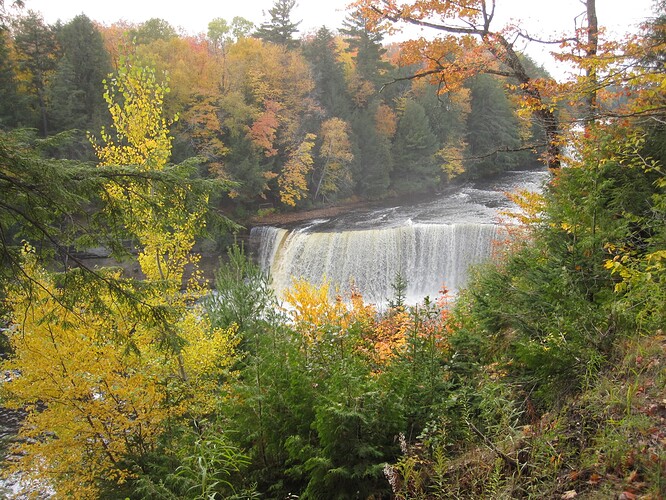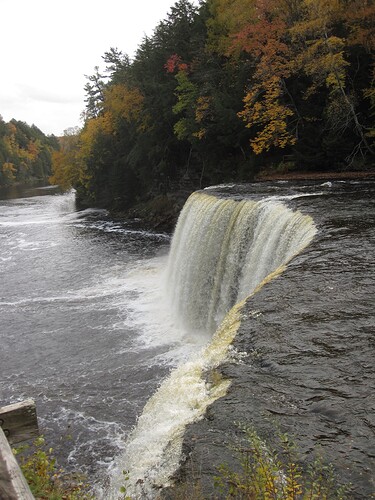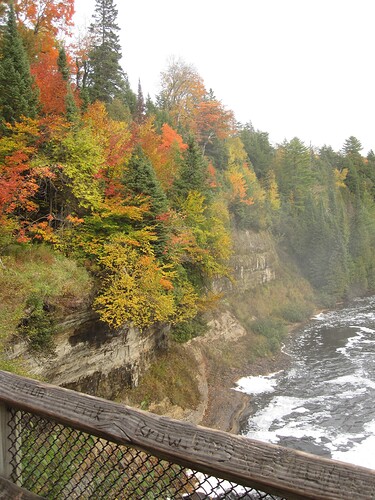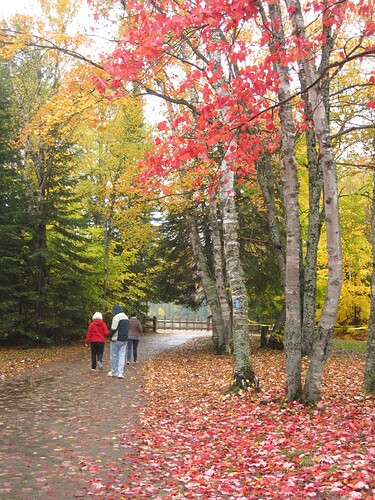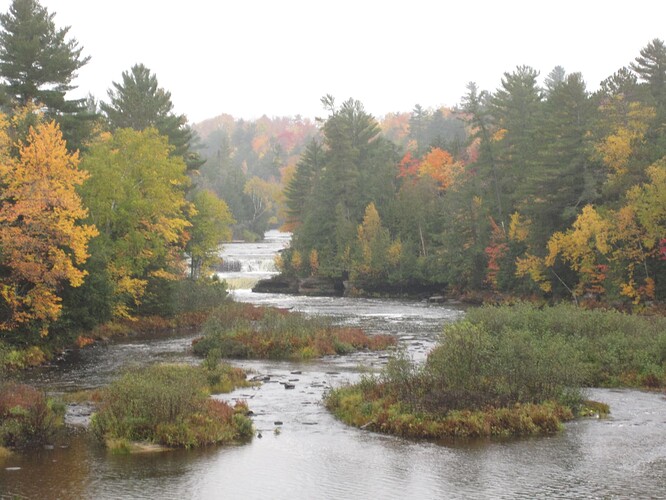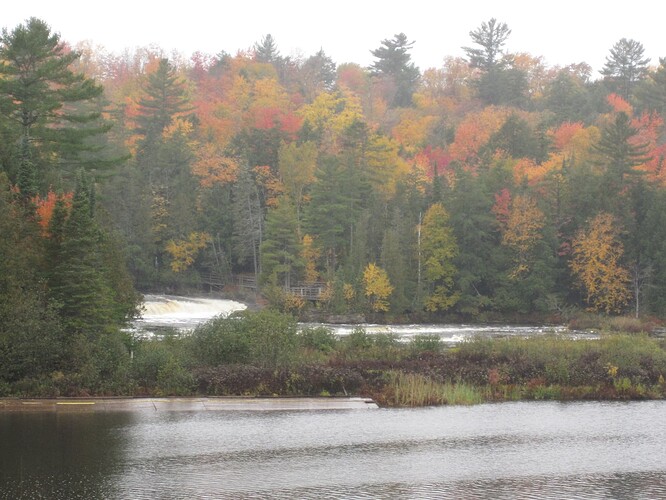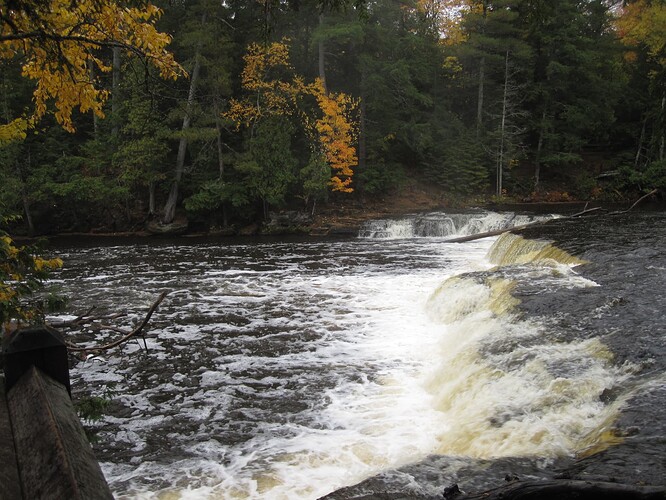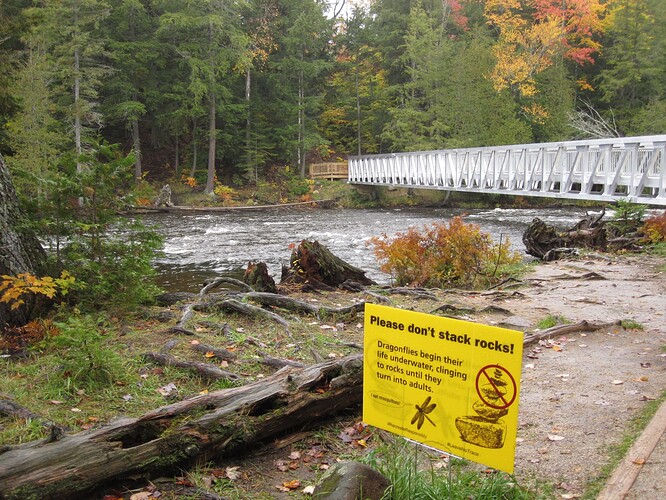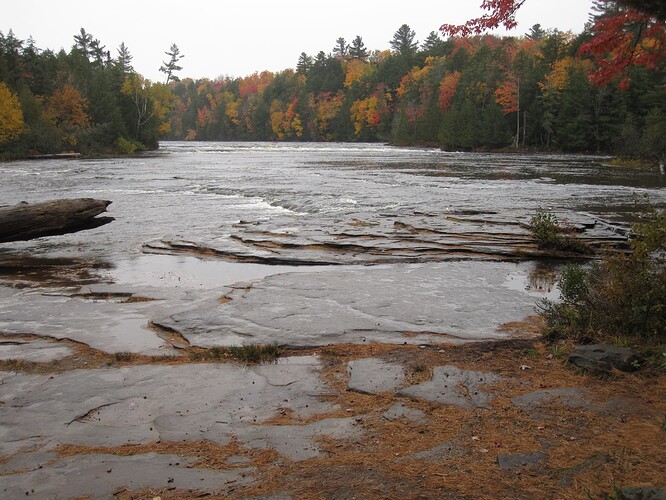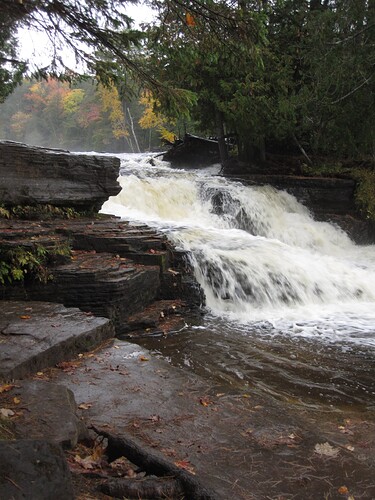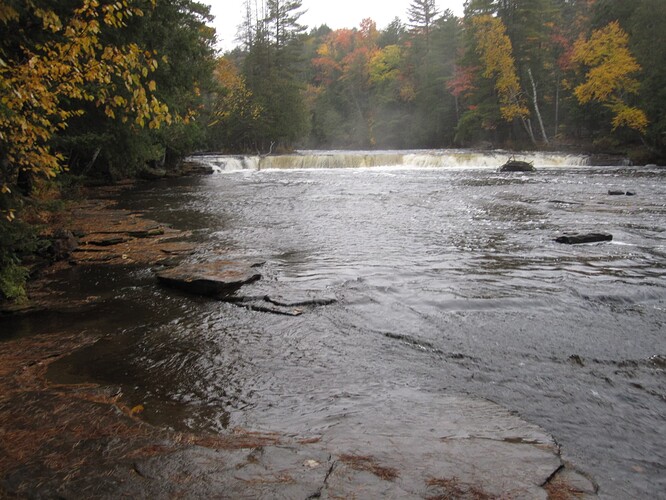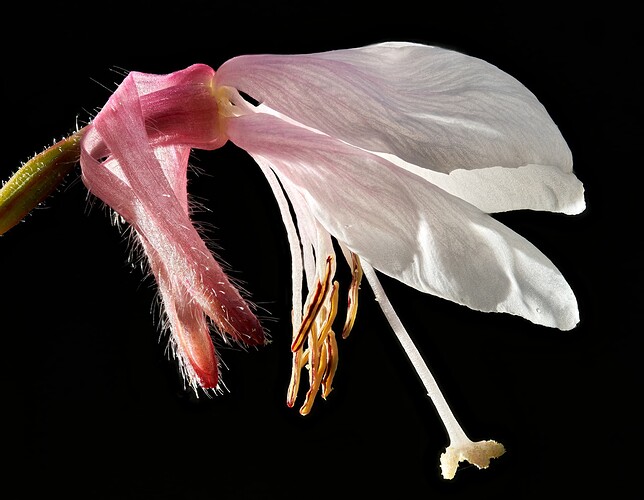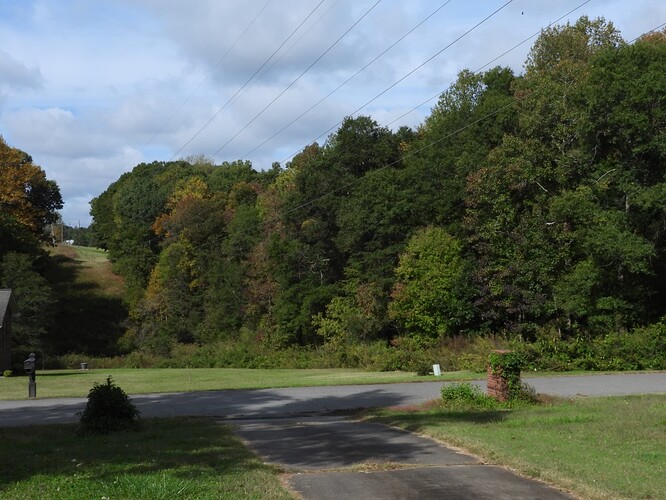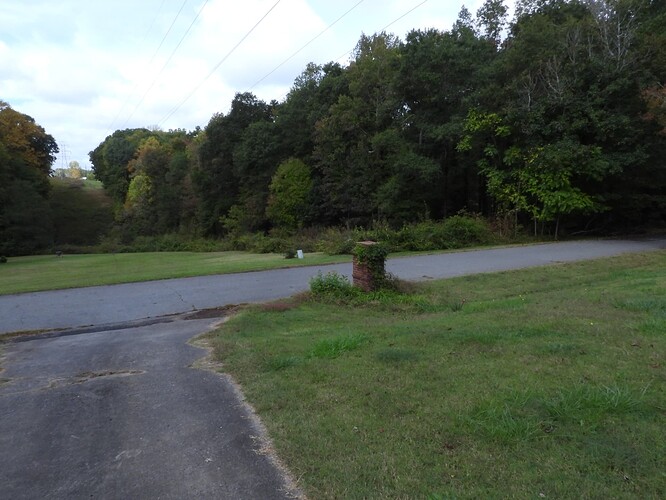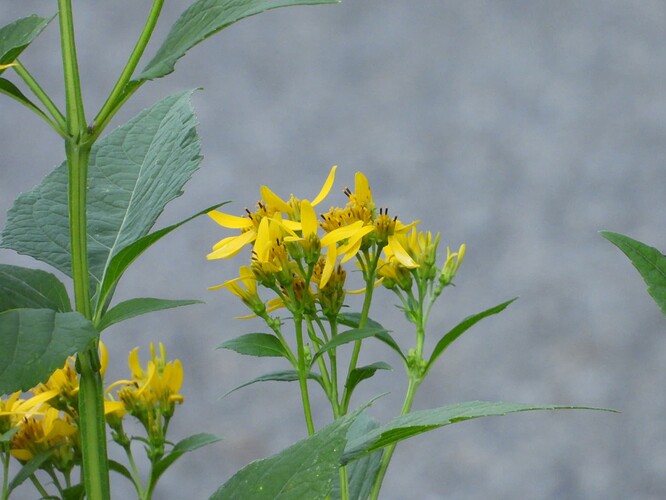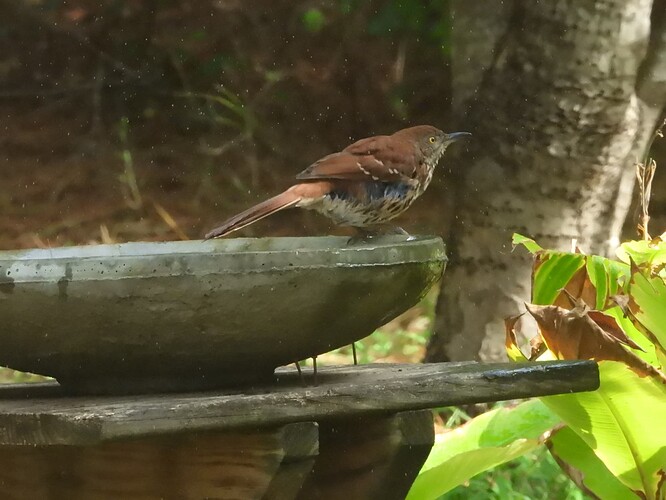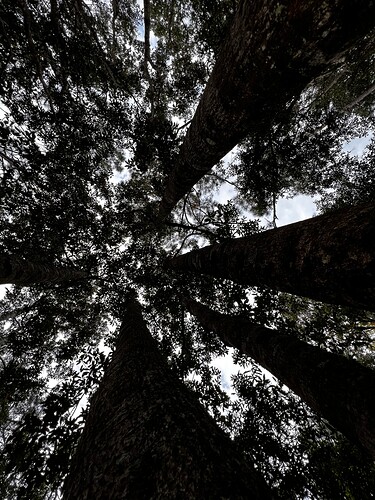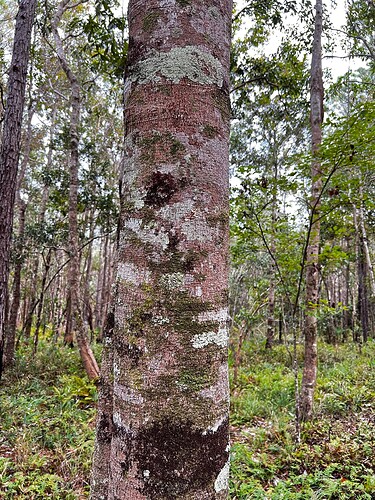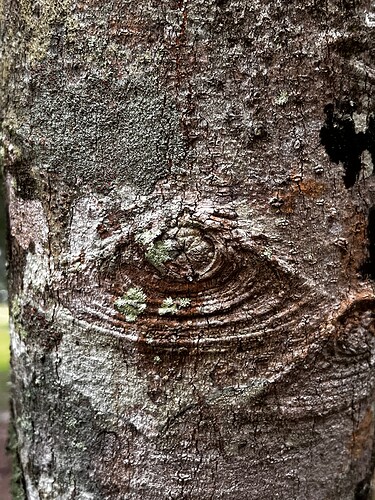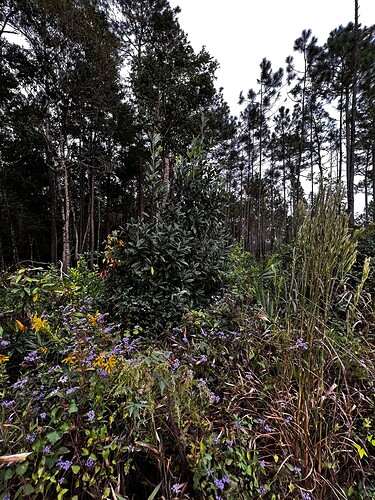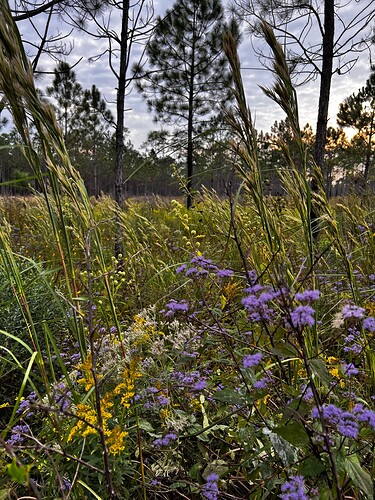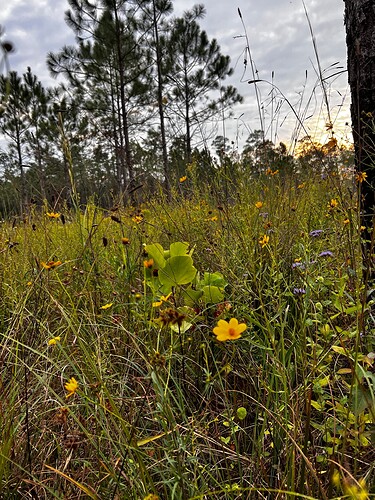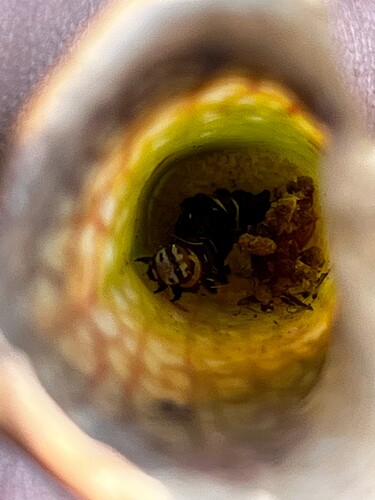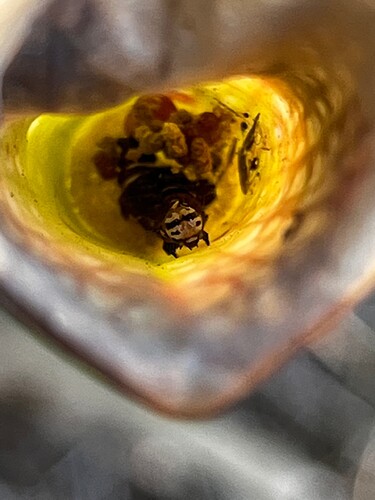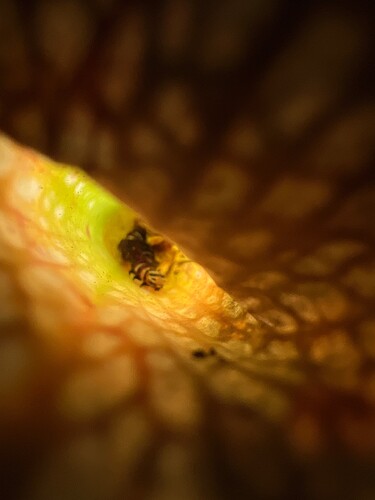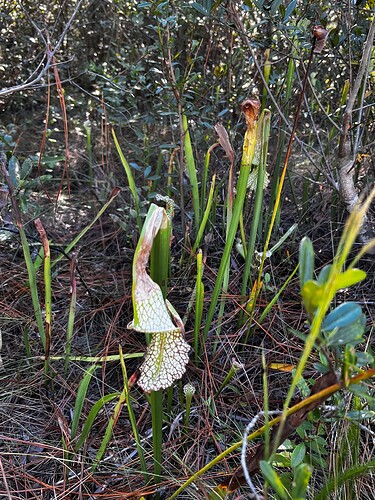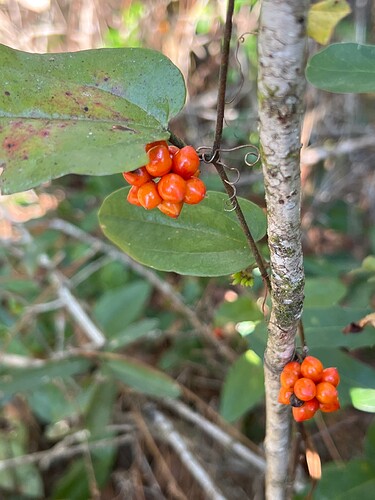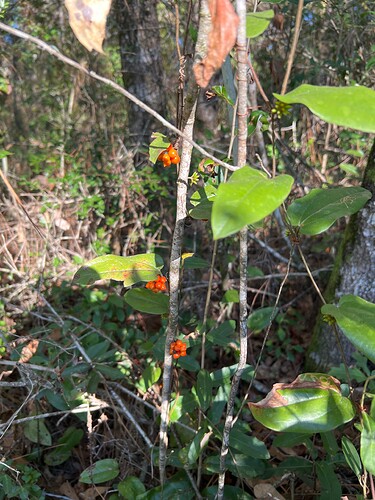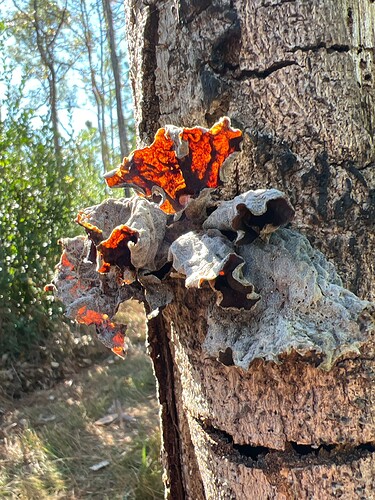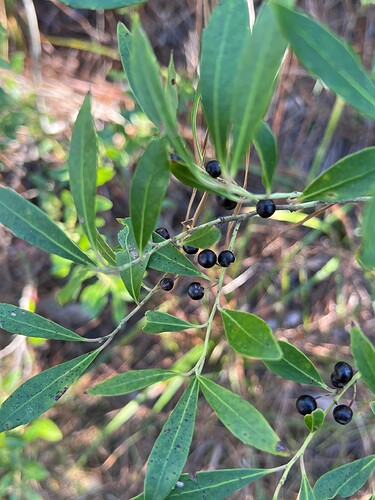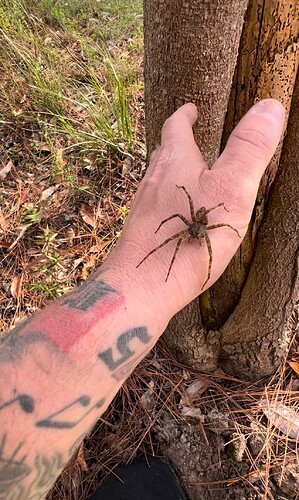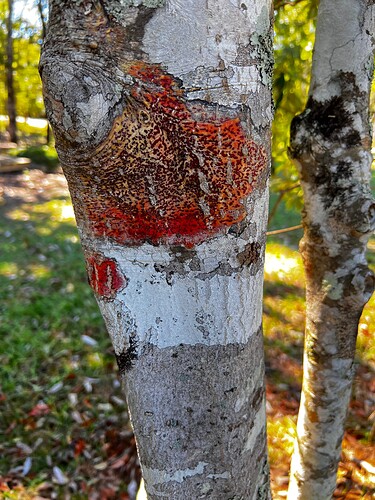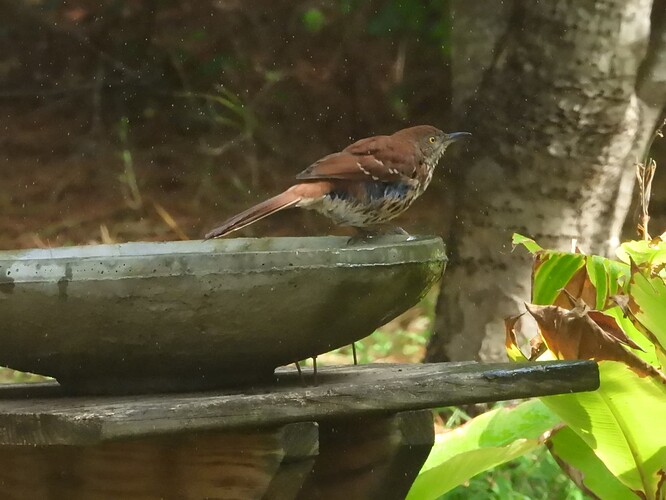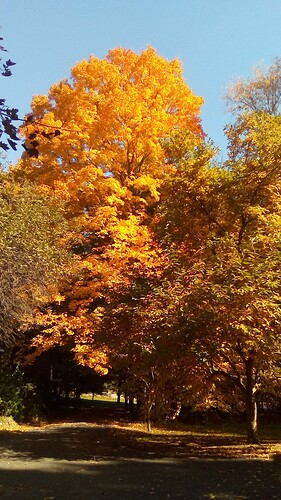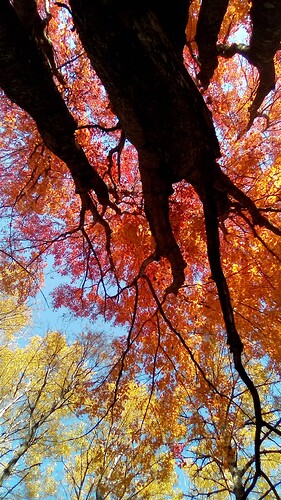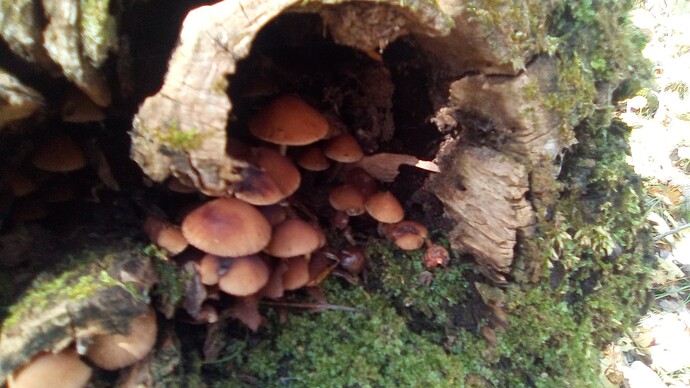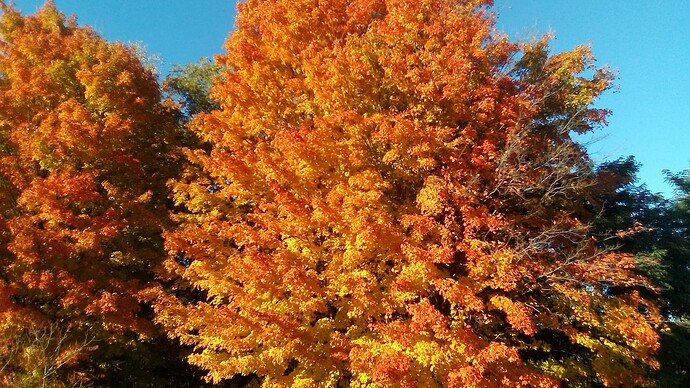Wish you’d all been here with us. This is one of my favorite places. Period.
Some highlights of Tahquamenon Falls near Paradise (Michigan) on Friday.
Main drop at the Upper Falls with lots of color. The bright colors in the U.P. (Upper Peninsula) are spread out more, because there are more conifers in that part of the state than deciduous trees.
A closer view of the main drop.
Some brighter colors downstream:
My family and some amazing maple color in action:
About 3 miles farther down the river at the Lower Falls. In the summer you can rent a row boat and row across here to the island that’s toward the right side of the photo.
A bit more of the island.
There are falls in the river all around the island.
The anti-rock-stacking sign in action with the new bridge that goes to the island! What a treat, not having to row, and to see the river from this new vantage point!
In the summer, these shallows are perfect places to start wading out into the river. Near the banks, there are many shallows, where we often walk around or enjoy the view. Because the bottom of the river is like stair steps, it’s a popular place to walk around (wearing shoes!), but it’s also easy to wind up to one’s waist in water, by stepping into an unseen hole.
Always one of my favorite spots to hang out, when we’re on the island in the middle of the river. I’m standing on a large, flat slab, big enough to have a family picnic, right next to this narrow, swift fall.
One last look up the river, before I head back to the bridge.
I didn’t buy the shirt, but the sentiment is perfect. I do a lot of thinking in many directions, when I’m outside.
